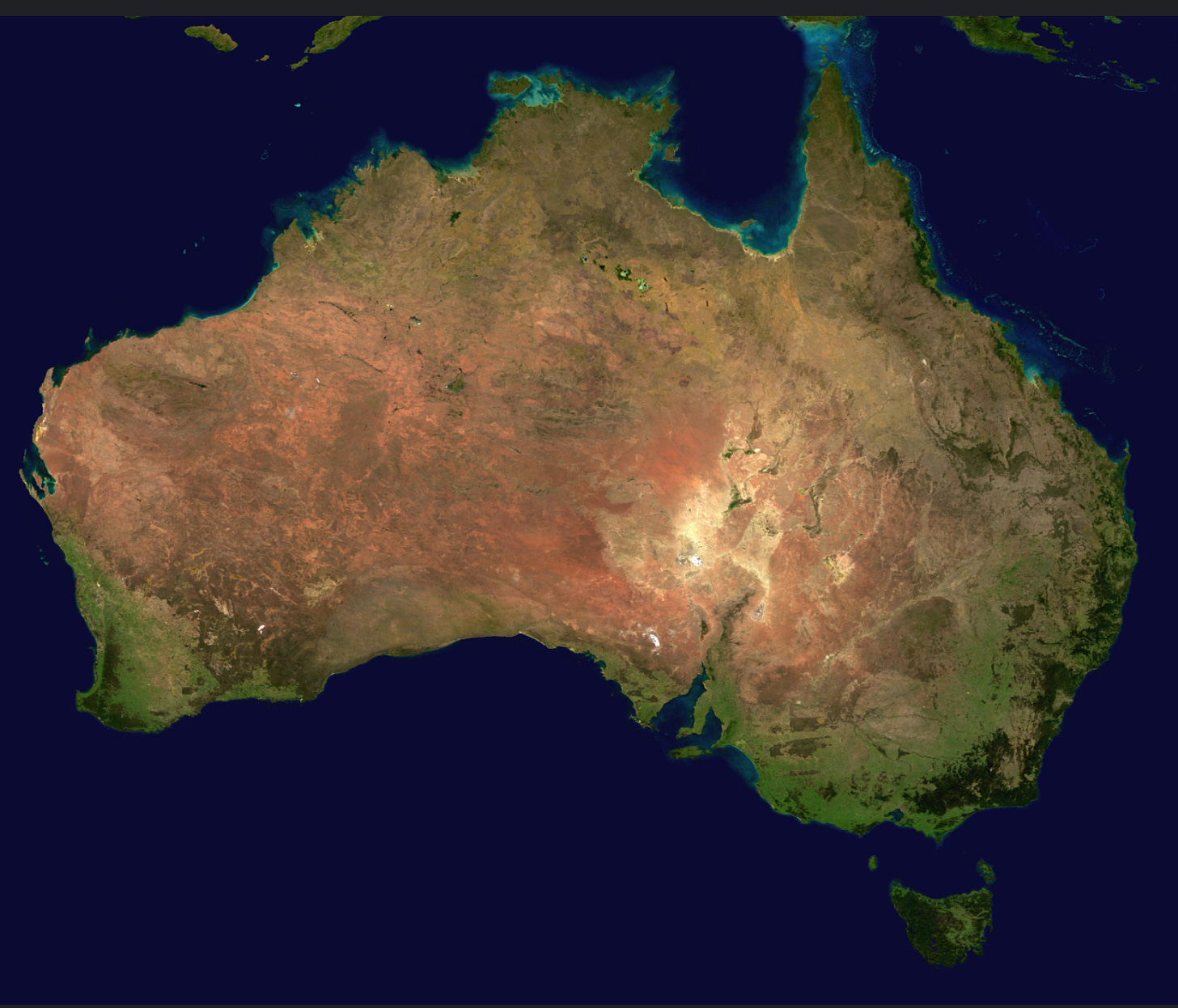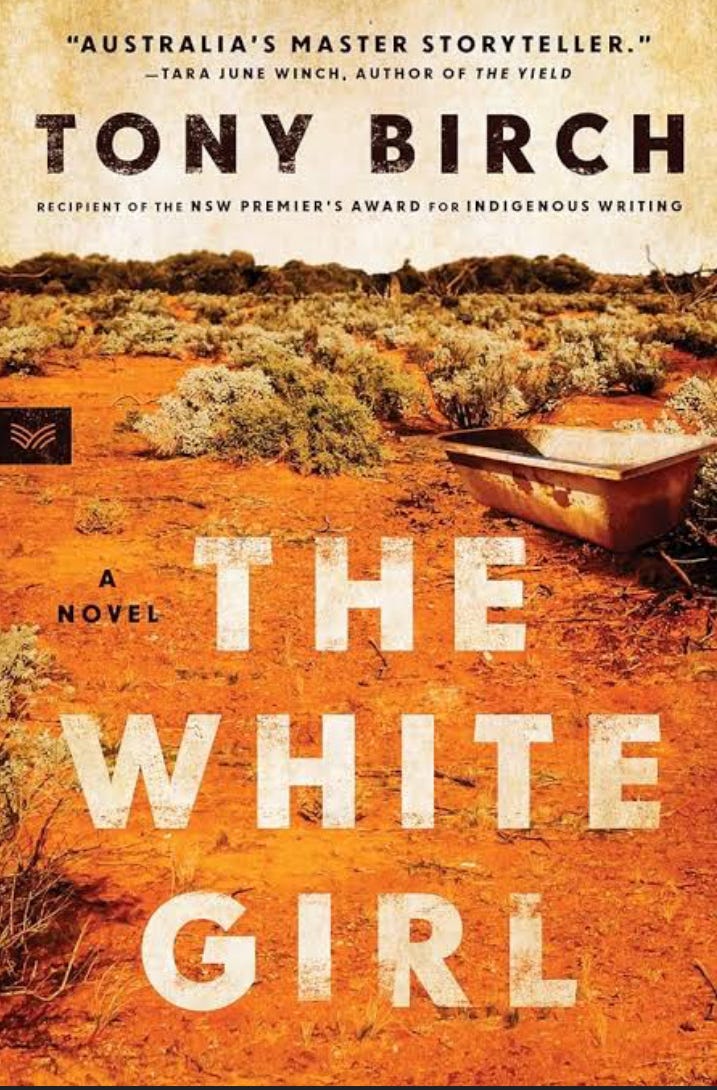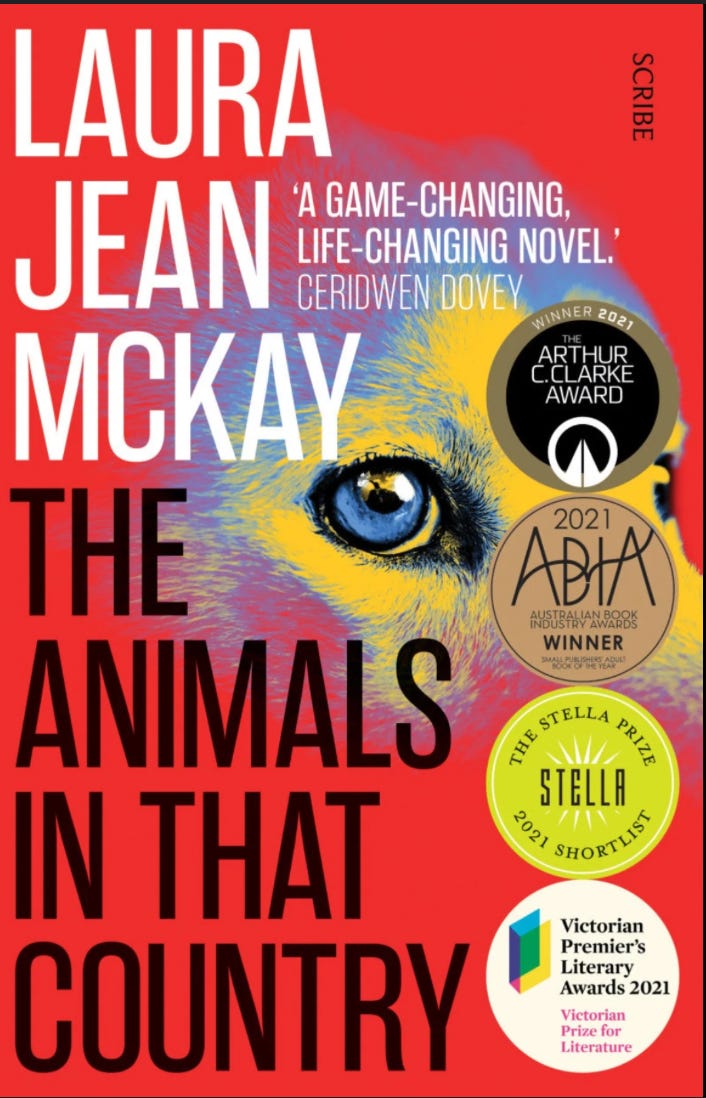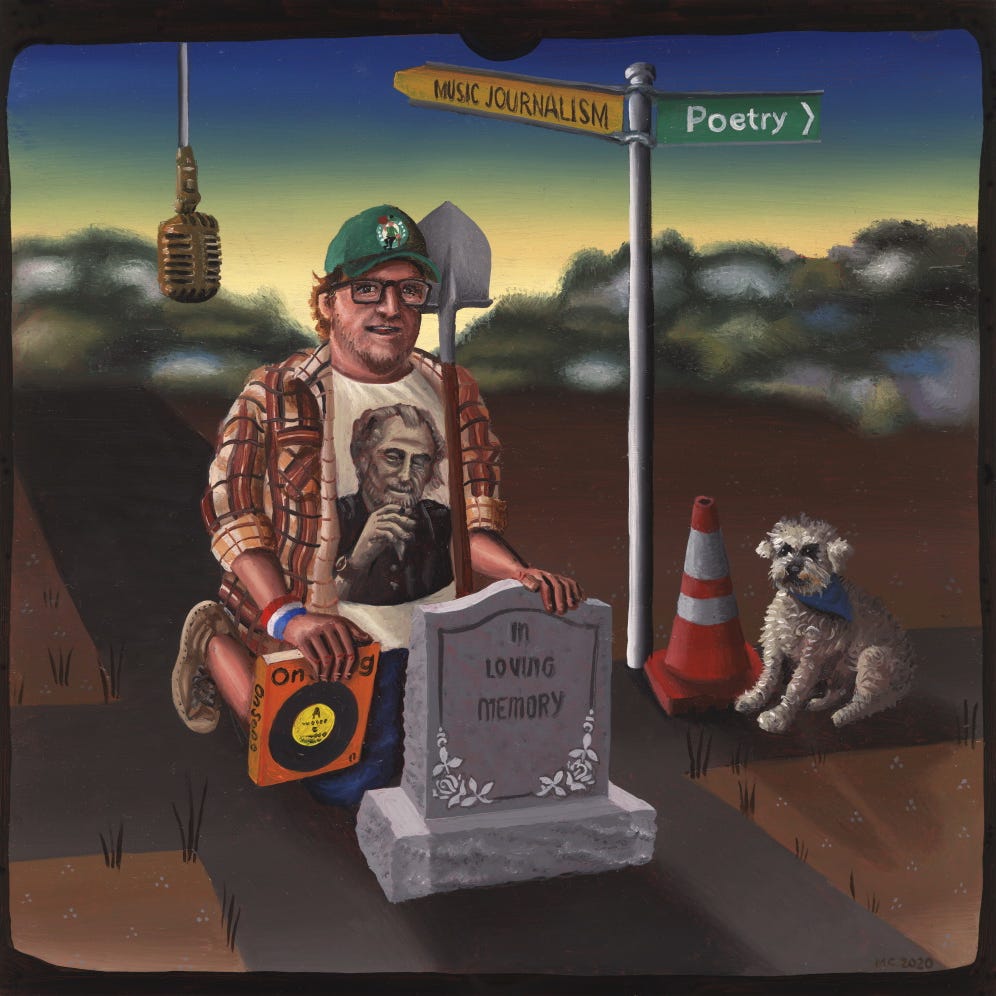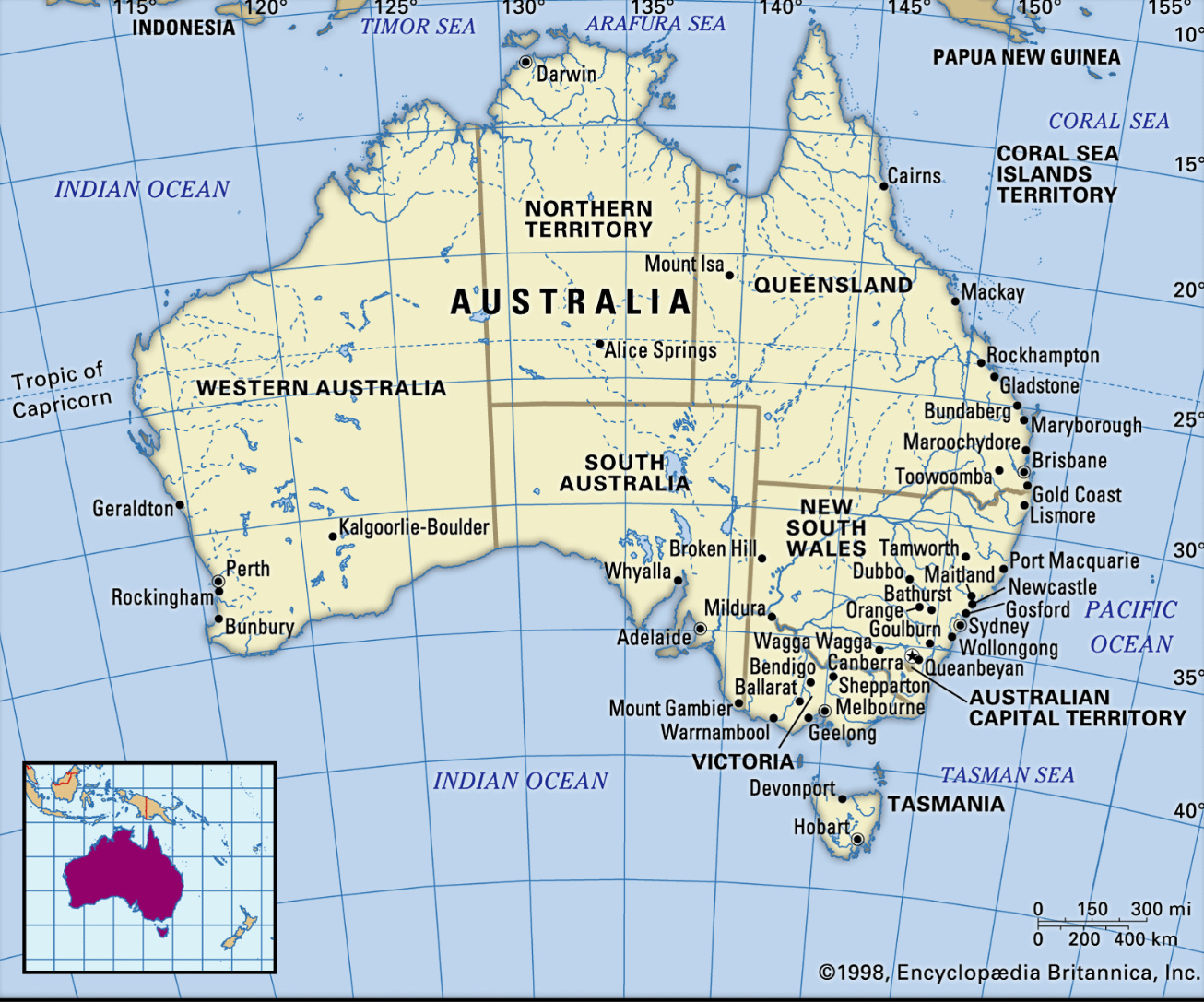Tony Birch’s The White Girl (University of Queensland Press, 2019) and Laura Jean McKay’s The Animals In That Country (Scribe, 2020)
Wednesday is about books and reading. Sometimes it’s about writing. Here’s a look at two recent novels (from the last five years) that I really enjoyed…
Some Other Country, Some Other Animals: Two Recent Australian Novels Exploring Resilience, Human Relationships, and Coldness Within Such a Hot Climate — One with a Foot Stoically in the Past, The Other with a Toe Cautiously Pointing to the Future
New Zealanders have an affinity with Australia. Our mates across the ditch. We ditch the rivalry as soon as we are there on holiday, seeing ourselves in the larger version of our own cities — but, in general, we send ourselves to the twin Big Smokes of Sydney and Melbourne, maybe to some outer lying but connected suburbs. Perhaps Perth? Brisbane beckons…
But that is barely even the beginnings of a fair suck of the saveloy, when it comes to Australia’s giant landmass. Ever notice that the horror stories in Australian literature (Wake in Fright, 1961) and cinema (Wolf Creek, 2005) don’t take place in the beach towns or big cities, rather they’re locked tightly in-land and down long dirt roads, somewhere in the middle of nowhere, just past the intersection of Existential Dread and Certain Trouble.
Australia might have shovelled much of its dark past and dusty remnants deep into the middle of the country, away from its mini-America Tourist Trap big cities. But the music of The Necks, The Dirty Three, and The Drones, the visual art of Elizabeth Durack (who also painted phoney Indigenous artworks under the pseudonym “Eddie Burrup”) and the films of Philip Noyce and Peter Weir all manage to lift the lid, to remind us that over in the land where the temperature is boiling there are political, emotional, existential vagaries to that heat.
The Stolen Generation and She’ll Be Right, Mate. Somewhere in the vast, sprawling chasm between those iterations of the same Australian and the same Australia lies a bruised, broken, buried and burned-out truth.
Two recent Australian-set novels reminded me of this aspect of our big brother’s culture. And how the creative artists in that country are not afraid to point to the past, to ponder the future, and wonder all the while at the wasteland of human disgruntlement, societal oppression, and stoic battling that occupies so much of the present, even if the majority of it takes place in the blind eye of the sand storm where camels are culled out of necessity and the ‘Roos are sometimes still chased down for sport.
Tony Birch’s The White Girl (University of Queensland Press, 2019) and Laura Jean McKay’s The Animals In That Country (Scribe, 2020) have some obvious surface parallels. Both feature strong, you could even say fierce Grandmother characters in the lead. Both have alienated some of their family but remain loyal and focussed on filial obligations. And from there the novels occupy very different worlds, exploring different parts of both the country, and the psyche. They are set in different times, but still circle around some of the same sticking points, specifically the oppression from larger societal forces, the complexity of human relationships.
The White Girl is a historical novel, set, we assume, in the 1960s. We are never told exactly, the town is fictional, but we can almost smell it. There are hints at the time and place as much from descriptions that feature a distinct absence of mod-cons and today’s technology, but as such we’re never really explicitly told.
Odette Brown, an Indigenous woman has emotional baggage to match the luggage that hangs from under her eyes. She’s lived through some of Australia’s worst racism but is living it still. Her granddaughter, Sissy, who passes as white (being lighter skinned) is being uplifted. Welfare authorities are removing Aboriginal children from their communities. Sergeant Lowe arrives to town, with a purpose, and without kindness. This sets off a journey for Odette, as she aims to stay as connected to her family as she can.
Birch’s novel is propelled by colonialism without ever calling it out. In simple speech, in pared back, plain English, he crafts a story that is filled with emotional observations, and shows us the connection between family, with the dagger of class dangling above such scenes as when Odette and Sissy stay in a hotel. It is Odette’s first time seeing “a proper bathroom”. She’s been a farm worker and is used to outhouses and “glorified lean-tos”, constructed from corrugated iron at best. Where here, it’s pure porcelain, sparkling even. A revelation comes when Sissy pantomimes turning the taps to show that no fire is needed with this tub. Odette’s reaction is to declare, “I don’t believe a Queen would have a bathtub any better than this”. We feel the decades of basic necessity that Odette has lived with, but also the decades of squalor before her, the generations growing up without. It’s all, ahem, washed away in an instant when Sissy says, “Well, you’re my Queen, Nan. I want you to get in”.
Birch’s book is filled with quiet passages that speak in volumes. And he’ll use the bathtub as metaphor, and in so many ways. It is the place for exploration of pain, care, love, and restoration — it is a connection with the elements and a grounding in place, a calming world, temporary hiding spot; the safety (and intimacy) of family and family care.
For The Animals In That Country, Laura Jean McKay moves forward into speculative fiction, almost the exact opposite of historical, as far as genres can go. But she sets her story up along some similar lines. There’s no Indigenous noose for her main character, so instead it’s the self-sabotage of alcoholism. Jean, like Odette, is a grandmother. Fierce, and loyal, and therefore fiercely loyal, she’s also fiery and prone to falling out. But she’s a functioning alcoholic, and beyond that she has empathy for the animals she works alongside in the zoo. She talks to them. She translates what they ‘say’ in funny voices. She’s a hit with the park’s visitors. Are animals easier for Jean to understand? In so many of her human interactions, we could characterise Jean as lacking in empathy — but people that are kind to animals are so often portrayed as gentle, thoughtful, and less selfish. McKay uses her lead character to explore the conundrum of human beings. Her Jean is impulsive, rude, stubborn, she lacks self control, is loud, abusive, but then finds time to connect with animals. The animals perhaps don’t judge her in the way that human beings have. Words hurt. Jean has almost certainly hurt people with her words. And been hurt in return. Her daughter won’t speak to her, so she’s being hurt by a lack of words, a devastating silence.
But just as we are getting to know Jean, and see her operating in this world, a pandemic hits and a strange result of an avian flu is that the animals are given the power of speech. It’s an odd speech though, nightmarish, impossible to fully understand — clipped, and in a peculiar, poetic metre that is jarring, never soothing:
“Wait. I can see
now —
hopping.
Hopping. Hopping.
Continue.”
Soon Jean is off on a road trip to find her estranged daughter. She has her granddaughter with her (a thematic similarity with The White Girl) and also Sue. A talking Dingo. They encounter some Animal Farm-esque pigs, and various other animals along the way, and you could be forgiven for thinking this is all a drunken delusion, some alternate reality; a parallel world that is in part some lubricated fever-dream. But no, this is the world after — or during — the plague. This is the uncertainty of the new world, and the line between animal and human is interrogated, with McKay paying particular interest to the failures or failings in communication.
You could consider one of the ideas in this book being that if we could talk to the animals would we actually want to. For a start, could we even understand them? McKay is curious, too, about whether we even understand ourselves. Here’s her Jean, named in part after the author (using her middle name for her main character) is she telling us that she, being human, has some of the same flaws as her character? Is she being sure to not hide from all of this interrogation?
Tony Birch, by contrast, is barely ‘there’ in his book. It is named The White Girl. He is an Indigenous man. He has some knowledge to draw on to inform parts of the story, but he is most concerned with burying himself down deep inside the lines, presenting a story from so close alongside as to be hidden, rather than running roughshod over it. McKay’s drift towards science fiction, or is it a strain of cli-fi, given she’s so concerned with the abandonment of human beings’ obligations with the natural world, is altogether wilder. A dystopia playing out in an alleged real-time, and is Jean being immune to the virus merely the proof that she is entirely detached from the actual world? So animal-like in her own behaviour as to be able to actually connect with and decipher the animals now, but still in search of her own human daughter; still in search of the parts of herself.
I couldn’t help but wonder if part of The Animals In That Country’s viewpoint, or subtext, was that animals were a stand in for the Indigenous voices lost in the world of that land so long ago (or simply ignored), but there before the white settlers. There are thousands of languages and dialects in Australia, many of them lost to time now, or not captured for history’s books at least. And yet here is Jean happy to ride along in a vehicle with a Dingo, the very Australian riff on the ideal of the dog as ‘man’s best friend’, but she has made no effort to understand the communication of the people that were there on the land so long before her. She’s bigoted and ignorant in so many ways. It’s not just Jean of course. Almost no one has made any effort. Jean is symbolic of the ugly truth.
The pandemic novel is a great one for making reluctant heroes, or at the least battle-scarred soldiers out of life’s fringe players. Stephen King’s The Stand, published in 1978 (Doubleday), was referenced when the world’s actual Coronavirus pandemic was playing out. One of the characters from that tome, Trash Can Man, a mentally ill man of questionable ethics and morals becomes one of the beacons for a new light by virtue of his ability to survive. Is Jean a similar sort of example. Not the hero we need, not even the hero we deserve, but the one we’re getting. The idea of a plague that forces isolation — in this case in an already isolated part of the country — has been one of fiction’s great level playing fields too.
I felt some similarities here to the New Zealand novel The Quiet Earth by Craig Harrison (Hodder & Stoughton, 1981). Like Trash Can Man, and Jean, John Hobson is unbalanced, unreliable in a sense. He’s a scientist, but it’s revealed that he was being monitored by his own organisation, because he was acting deranged — on account of some guilt he is living with. He’s not quite Jean’s alcoholic, or Trash Can Man’s homeless, drug-addled drifter. But he is the slightly more acceptable face of that same syndrome. And when he is left as one of the few alone on the world, he is forced to finally consider his own actions as he contemplates his fate.
The White Girl, by being set in the past, a recent past, at the edge of Australia’s ‘Stolen Generation’ and all of the baggage that sits in that, reminds us of the resilience of Indigenous people in that country, and of women. The Animals In That Country hints at a future resilience, one still playing out. Again, a resilience as best embodied by women. Both novels are concerned with judgement without exploring the actions of judgement as much as they sit the reader in the world that is happening as a result of such judgements. We live with Odette through the ongoing trials of racism, and the deep need to stay connected with her family. We travel with Jean as she adapts to a strange, new world whilst still trying to find herself, via the hope for connection with her estranged daughter.
I feel that these books work, and work together in some way, because of their decision to lead with female characters. An assertion that women are the empaths of the world, even if in the case of Animals’ Jean it is arrived at by quirk, or almost fluke.
Tony Birch’s book is deeply Australian, its connection to the land, and its writing style, are reminiscent of another deeply Australian author, Tim Winton. In the same way as Winton, Birch provides you with earthy, rootsy setting and makes little in the way of actual judgements. The story pulling you along with it, without ever telling you how to feel.
Laura Jean McKay’s book uses Australia as a setting, and allows the author to project her own frustrations with the place, and a deep set of confusions and sadnesses onto that canvas. But she is coming more from a science fiction/speculative base akin to that of Margaret Atwood and Ursula K. Le Guin. A tough-minded feminist perspective is something McKay shares with both authors, as she uses the speculative setting to explore themes of connectedness against the challenge of oppression.
Tony Birch’s measured book is his unpacking of a deeply troubled part of Australia’s past. But when reading his calm retelling of some of the deep-rooted pain alongside McKay’s more off-kilter and agitated story, we might worry that the questions deep at the centre, around humans and our need to connect, humans and our lack of empathy or lapse in willingness to try to understand or connect with the non-human, still haven’t been answered, or resolved in quite the right way. What pumps through both books is blood. Blood and grit. Two things we have always had. Two things we will always need.
The White Girl by Tony Birch (University of Queensland Press, $40) and The Animals In That Country by Laura Jean McKay (Scribe, $35) are both available where you find decent books.




